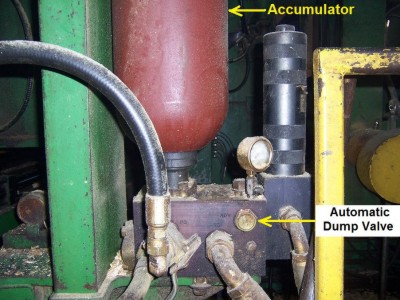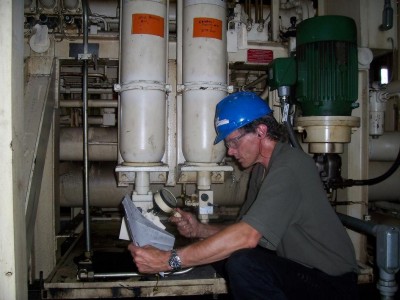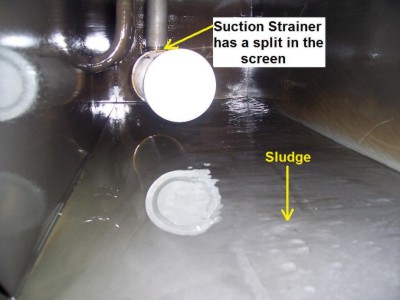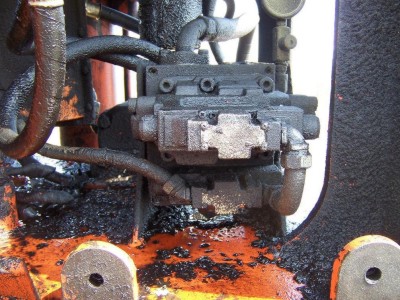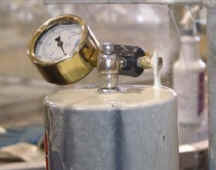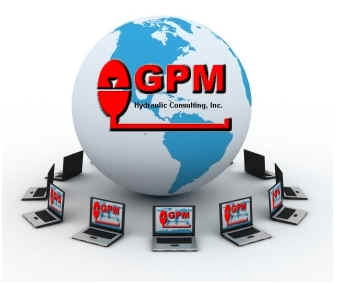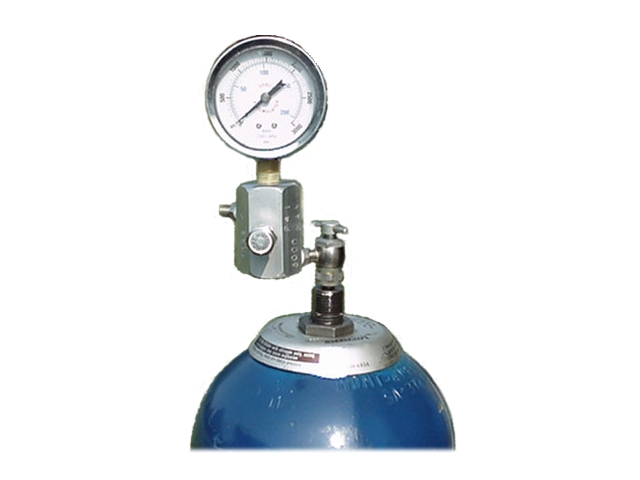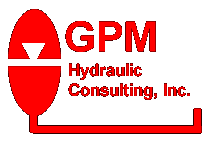
P.O. Box 1376
Monroe, GA 30656
(770) 267-3787 gpm@gpmhydraulic.com
For an archive of past newsletters, please visit:
http://www.GPMHydraulic.com/newsletter_archive/
CLICK HERE to send this newsletter to a friend!
|
'Troubleshooting Hydraulics' Newsletter |
||||
|
||||
|
In This Issue |
||||
| 1.
The Top 5 Common Hydraulic Mistakes
2. "What You Don't Know About Hydraulic Accumulators Can KILL You! Safety Webinar 3. In-Plant Troubleshooting and Consulting 4. 2009 Public Maintenance Hydraulic Troubleshooting Workshops 5. 2009 Public Troubleshooting Hydraulic Pumps and Accumulators Workshops |

Maintenance Hydraulic Troubleshooting on Interactive CD
Our nationally acclaimed Maintenance Hydraulic Troubleshooting workshop on six fully interactive CD's. Includes our MHT workshop manual. 6-CD Set - $1200 Individual CD's - $250 + Shipping and Handling. Click on http://gpmhydraulic.com/mhtcds.htm to find out more.
 Al
Smiley President of GPM Hydraulic Consulting,
Inc
Al
Smiley President of GPM Hydraulic Consulting,
Inc
When you turn on the television and surf the guide, you’ll see shows like “ Top 10 Beaches in the World”, “Top 20 Worst Celebrity Bodies” and “Top 100 Hits of the 80’s”. So to stay current with the times this article is on “The Top 5 Common Hydraulic Mistakes” plants make over and over again. This falls into the definition of insanity that we’re all familiar with: “doing the same thing over and over and expecting a different result.” Here are the Top 5:
Mistake No. 1 - Hydraulic Pressures are Improperly Set
On every hydraulic system there are usually a multitude of adjustments to be made. When a machine problem occurs, knobs on the hydraulic pump and valves are adjusted to “see” if this solves the machine problem (Figure 1). Unfortunately, the person doing the adjusting usually has no idea what the effect is on the machine. Pressures in a hydraulic system are usually set too high. The thinking is the higher the pressure, the faster the machine will run. Consider the following real case scenario that occurred at a wood products plant:
|
|
A company had severe shock and leakage problems on their lumber stacker. The pump was also being changed at intervals of once per month. There was an adjustment on the pump (called a compensator), which limited the maximum system pressure. There was also a relief valve in the system that was used as an extreme safety device and a shock absorber. The recommended settings of the compensator and relief valve were 1500 PSI and 1750 PSI, respectively. When the stacker started and stopped, the pressure gauge needle spiked to maximum, vibrated, then settled in at 1800 PSI. This indicated that the compensator and relief valve were both set too high. After resetting the compensator and relief valves to the recommended settings the pressure went up momentarily to 1750 PSI (relief setting) then settled in at 1500 PSI (compensator setting). Consider the difference in the force exerted on the 10” hoist cylinder (78.54 sq. inches of area) with the relief valve at 3000 PSI and at 1750 PSI.
Force with relief at 3000 PSI = PSI X Area
Force with relief at 3000 PSI = 3000 X 78.54 sq. inches of area
Force with relief at 3000 PSI = 235,620 lbs. of force
Force with relief at 1750 PSI = PSI X Area
Force with relief at 1750 PSI = 1750 X 78.54 sq. inches of area
Force with relief at 1750 PSI = 137,445 lbs. of force
The difference in force? 98,175 lbs! Once the pressures were properly set the shock was eliminated and the life of the pump was increased. After the clamps and
o-rings were replaced the leakage stopped as well.
Mistake No. 2 – Lack of Accumulator and Hydraulic Safety Procedures
When a machine is worked on, the pump electric drive motor is turned off and the lock out and tag out procedures are done. The pressure gauge is rarely checked before working on or around the machine. Accumulators store hydraulic energy in the form of pressurized fluid. Most systems contain an automatic or manual dump valve that will allow the high pressure fluid in the accumulator to dump to the tank permitting the pressure to drop to 0 PSI (Figure 2). The automatic dump valves can fail closed which will maintain the pressurized oil in the accumulator. If a line is taken off or a component removed, then the individual can become injected with high pressure fluid. When a manual dump valve is used, the human factor enters the equation. At one plant, a young millwright was severely injured when he was injected with high pressure oil when he failed to open the hand valve. There was no procedure in place for opening the valve before working on the system.
|
|
Many times the gauge is located on the pump side of the check valve and not the accumulator side. When the pump is turned off, the gauge will drop to zero as the oil bleeds to tank through the internal tolerances of the hydraulic pump. Therefore the maintenance person or operator thinks that the pressure is at zero and has no way of knowing if the pressurized fluid in the accumulator has been released or not. On systems of this design, a gauge needs to be installed at or near the accumulator.
Mistake No. 3 – Poor Troubleshooting Techniques
In our maintenance hydraulic troubleshooting workshops, we stress that the quickest and easiest method of troubleshooting the machine is to use the hydraulic schematic (Figure 3). The response from the students is usually one of the following:
|
|
1. Management won’t give us time to troubleshoot.
2. We don’t have or know where our schematics are.
3. We don’t know how to read the schematics.
When a hydraulic problem occurs, information must be gathered in order to make a decision as to what component is causing the problem. A few examples are checking the pump case drain flow, checking the feed back from a proportional valve LVDT, and checking for heat in the system. Many times the supervisor intervenes and demands that the pump, cylinder or other component be changed. At one plant, a supervisor instructed a millwright not to troubleshoot but to manually actuate a directional valve. This resulted in an accumulator discharging into a partially filled 5000 gallon reservoir. The top of the reservoir blew off which shut the mill down for seven days.
Hydraulic schematics are usually located inside the machine manufacturer’s manual, which are kept in a maintenance office or storeroom. When a hydraulic problem occurs, the last thing that the maintenance person is going to do is to take 15 or 20 minutes to find the print. After all, when the machine is down, time is money. A better option is to mount the larger prints out by the system under a Plexiglas cover. Smaller prints can be laminated and similarly located. If the schematic is readily available, it will be used.
The most common statement I hear from the mechanic and electrician when consulting with the plant on a problem is “ I don’t know much about hydraulics”. This means that they have either not been trained properly or have forgotten what they have learned. On the other hand, I go to plants where we have conducted machinery specific hydraulic training and I hear “We use your manuals and schematics all the time”. Without the proper training you cannot expect your maintenance crew to troubleshoot effectively.
Mistake No. 4 – Poor Hydraulic Reservoir and Oil Maintenance
While most plants do a good job at maintaining the system filters, the reservoir is usually not given any attention. When a system is designed, the size of the reservoir is factored into the amount of heat that will be removed from the system. Reservoirs should be cleaned a minimum of once a year to allow some of the heat in the oil to be released to the atmosphere. In Figure 4, a reservoir is shown that had not been drained and cleaned in 17 years. A thick layer of sludge is visible on the bottom of the tank. Notice also that the suction strainer is split which allowed contaminants to enter the pump. A reservoir that is not cleaned can act as an incubator instead of dissipating the heat in the oil.
|
|
Another common problem is that oil is frequently added to the system that is not filtered. This should never be done! Oil that leaves the refinery is clean however by the time it is stored in transfer trucks and drums, it might meet a 50 micron standard when added to the tank. Many systems have connections for attaching the fill pump hose so that the oil in the drum is ported through the system filter before it enters the reservoir. A stand alone filter cart can also be used when refilling the tank.
Mistake No. 5 – Components Are Replaced That Don’t Have the Same Part Numbers
When a hydraulic problem occurs, there is usually one component that has failed. It is essential to match the part numbers between the new and old components. Hydraulic pumps and valves that look alike are not necessarily the same. Each number or letter in the part number indicates a feature about the pump or valve. If there is one letter or number difference, then the manufacturer’s literature should be consulted as to what the difference is. A few years ago, a plant had the main directional valve (Figure 5) fail on their crane grapple. The valve had the following part number:
|
|
DG5S8-2A-T-50
A local vendor was called and said they had a valve that had the same spool configuration and the same mounting pattern in their central distribution center. The valve with the following part number was flown in and delivered to the plant the next day.
DG5S8-2A-E-T-50
When the valve was installed, the grapple cylinders still would not extend and retract. The manufacturer of the valve was then called and given the two different numbers. The original valve was an internally hydraulically piloted (letter “E” omitted) and drained valve. The valve sent by the vendor was an externally piloted and internally drained valve. Since there was no external pilot line connected in the system the new valve would not work. To solve the problem, the valve manufacturer told the mechanic at the plant to remove the internal Allen head plug in the “P” port and to install it in the “X” port. Once this was done the grapple operated normally but only after 18 hours down time!
These common mistakes are mostly made because of lack of knowledge. When the machine is down, the supervisor, mechanic and electrician are going to do whatever is necessary to get the machine back on line in the shortest period of time. By making sure that these Top 5 errors don’t occur at your plant, the down time will be reduced, your plant will operate safer and hydraulic troubleshooting will improve.
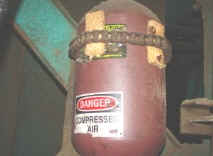
|
90 Minute Hydraulic Safety Webinar
No Travel Costs! |
A Hydraulic Safety Meeting In Your Browser!
Only $225.00 For One Participant or a Roomful! |
"What You Don't Know About Hydraulic Accumulators Can Kill You!" originally appeared this year in Southern Lumberman and Canadian Wood Products magazines as an article written by Al Smiley, President of GPM Hydraulic Consulting. The response was so overwhelming by plant, maintenance and safety managers that GPM developed a 90 minute workshop based on the article content. As a result, Georgia-Pacific and NASA contracted GPM to conduct this workshop at their facilities.
Since 1994, GPM Hydraulic Consulting has been recognized as the leading authority on hydraulic troubleshooting and safety. Until now, having GPM conduct a hydraulic safety meeting has required travel costs, scheduling attendees and securing a meeting facility. GPM has now made the workshop available through this online Webinar!
The webinar is fully browser based and requires no installation of software on your end. Our PowerPoint presentation is broadcast directly to your browser and audio is provided with a conference call (included in the registration fee). Once you register, you will be able to download and print out the program content. Questions can be asked and answered by text through the browser while the webinar is in progress! All of the benefits of a live instructor are provided with none of the additional costs. Since the webinar is priced by the number of computers connected and not by attendee, it can be presented on a large screen in a meeting room for the same cost as for one person.
Millions of dollars are spent to increase the awareness of electrical and mechanical safety. Hydraulics is rarely (if ever) mentioned in safety meetings. Hydraulic accumulators are the most dangerous component in the system. Don't wait until an injury or death occurs before educating your plant personnel on how to work safely on and around your hydraulically controlled machines. Click here now to register for the Webinar!
|
January 09 Webinar Schedule What You Don't Know About Hydraulic Accumulators Can Kill You! |
|
| January 9th | 7:00 AM EST |
| January 9th | 4:00 PM EST |
| January 16th | 8:00 AM EST |
| January 16th | 4:00 PM EST |
Cost of
access is only $225 for the 90 minute webinar!
![]()
Hosted By
Webinars can
be customized to fit YOUR training needs!
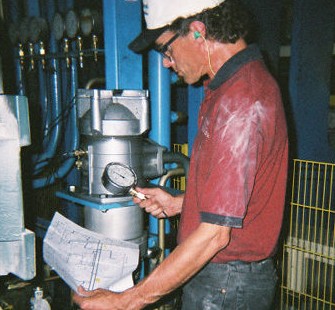
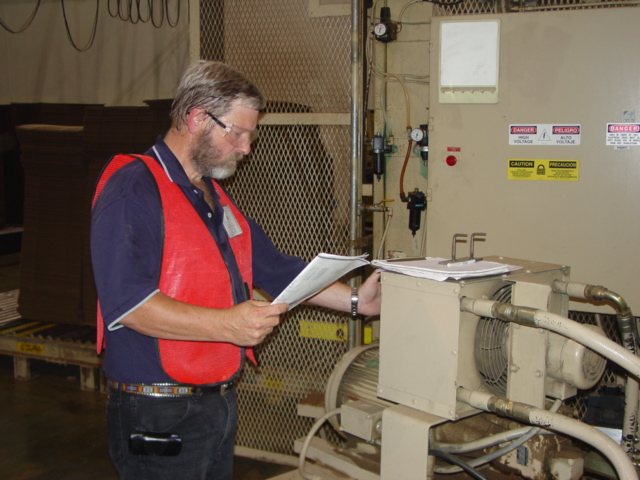
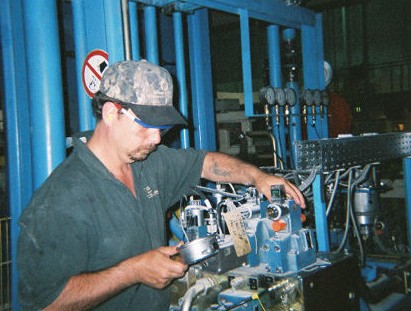
Nothing is more expensive than unscheduled down time. GPM’s customers know they can call whenever they have a troubleshooting issue they simply can’t resolve. With over 50 years experience dealing with hydraulic failures, our consultants have the resources to help troubleshoot whatever hydraulic problem you encounter. Whether you’re experiencing a total system outage, repeated component failure or just need a professionally designed preventive maintenance schedule, the consultants at GPM can help. Call GPM for
In-plant Troubleshooting
Leakage Problems
Pressure Settings
Shock Problems
Preventive
Maintenance Scheduling
Hydraulic Troubleshooting Manual Development
Startup
Consulting and Recommendations
Heat
Problems
Repeated
Component Failures
Speed Problems
Do you want to learn more about how GPM can help you? Go to http://gpmhydraulic.com/troubleshooting.htm
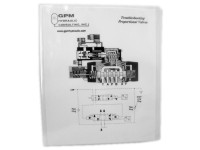
Troubleshooting Proportional Valves
The complete guide to troubleshooting and maintaining linear positioner circuits with electronically controlled proportional valves. The same manual used in our acclaimed Troubleshooting Proportional Valves public seminar.
$49.95 + Shipping & Handling
To order this and other exciting products online, visit the GPM Store!
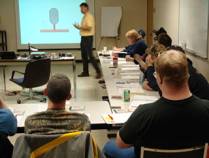
Maintenance Basic Hydraulic Troubleshooting
2009
3 Day Workshop
Registration Fee Only $895.00 Per Person
Early Registration - $845.00 For Confirmed Reservations Booked 21 Days Prior to the Start of the Workshop
Call (770) 267-3787 To Register
Learn More About Our Maintenance Basic Hydraulic Troubleshooting Course
2009 Maintenance Basic Hydraulic Troubleshooting Schedule
Date
(Our mobile lab will not be available for this program - display pumps and valves will be used for learning purposes)
(Our mobile lab will not be available for this program - display pumps and valves will be used for learning purposes)
(Our mobile lab will not be available for this program - display pumps and valves will be used for learning purposes)
*Don't see your city listed? Call If You Would Like To See A Workshop Scheduled In Your Area!
(770) 267-3787
|
|
||||||||||||||||||||||||||
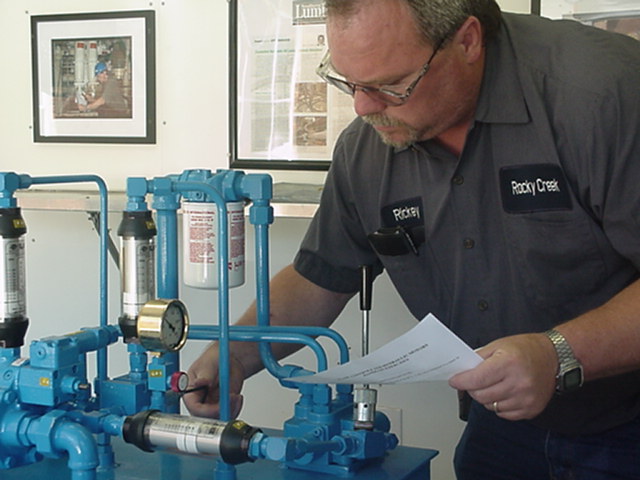
|
Hydraulic pumps and accumulators are the two components that determine how fast your machine operates. When a hydraulic problem occurs the pump is usually the first component that is changed. Since it is usually the most expensive and time consuming part to change out, it should NEVER be changed unless specific checks are made to verify that the pump is bad. The accumulator is the most dangerous hydraulic device. Prior to working on or around the machine you MUST verify that the pressurized fluid in the accumulator is at 0 PSI. Failure to do this can result in injury or death! What You Will Learn in This Hands On Workshop
Call, fax or email today to register for
this money saving and safety awareness enhancing workshop!
(770) 267-3787 Phone (770) 267-3786 Fax gpm@gpmhydraulic.com Registration Fee - $395
|
|||||||||||||||||||||||||
If you've found our newsletter informative and beneficial please click here to tell your co-workers and friends.
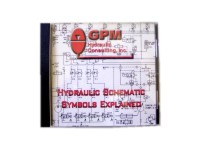
Hydraulic Schematic Symbols Explained
This interactive CD is the fastest, easiest way available to learn hydraulic schematic symbols.$49.95 + Shipping & Handling. Find out more, go to http://gpmhydraulic.com/symbolcd.htm
Site Index
[Home] [Our Training] [Hydraulic Consulting] [Safety Webinars] [System Flushing] [Our People] [Downloads and Multimedia] [Testimonials] [Hydraulics Quiz] [GPM Store] [Upcoming Events] [Contact Us]
GPM Hydraulic Consulting,
Inc.
Box 1376
Monroe, GA 30655
(770) 267-3787


